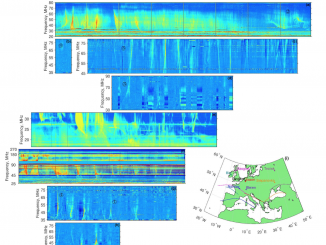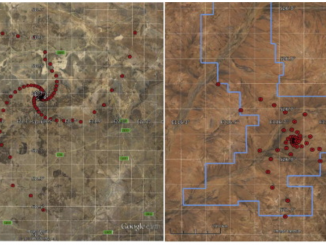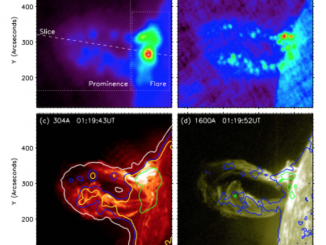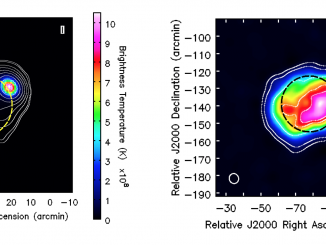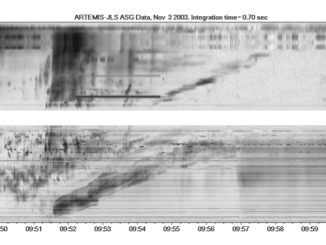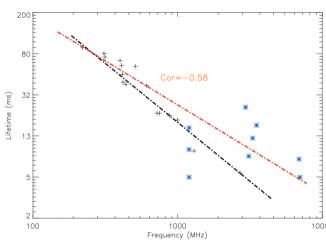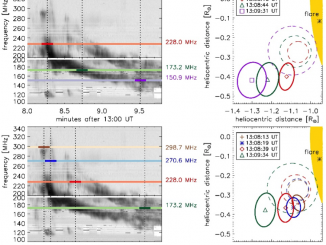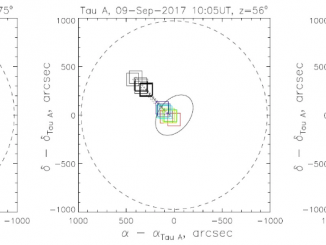Direct Observations of Traveling Ionospheric Disturbances as
Focusers of Solar Radiation: Spectral Caustics
by A. Koval et al*
The solar radiation focusing effect is related to the specific phenomenon of propagation of the Sun-emitted HF and VHF waves through the terrestrial ionosphere. This natural effect is observed with ground-based radio instruments running within the 10-200 MHz range, as distinctive patterns – the Spectral Caustics (SCs) – on the solar dynamic spectra. On the spectrograms they exhibit unusual morphology and specific time-frequency features (CESRA nugget by Koval et al., […]

